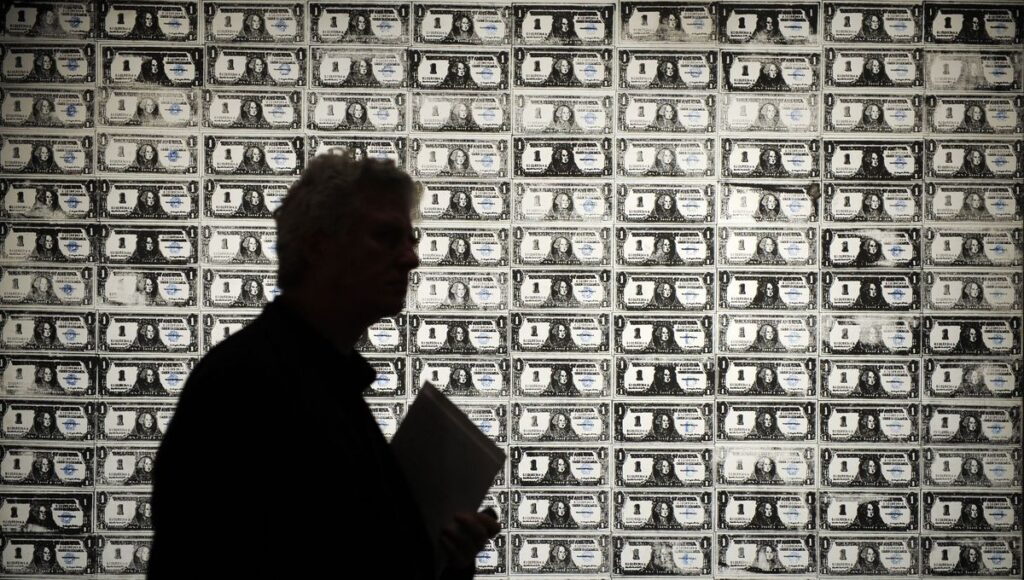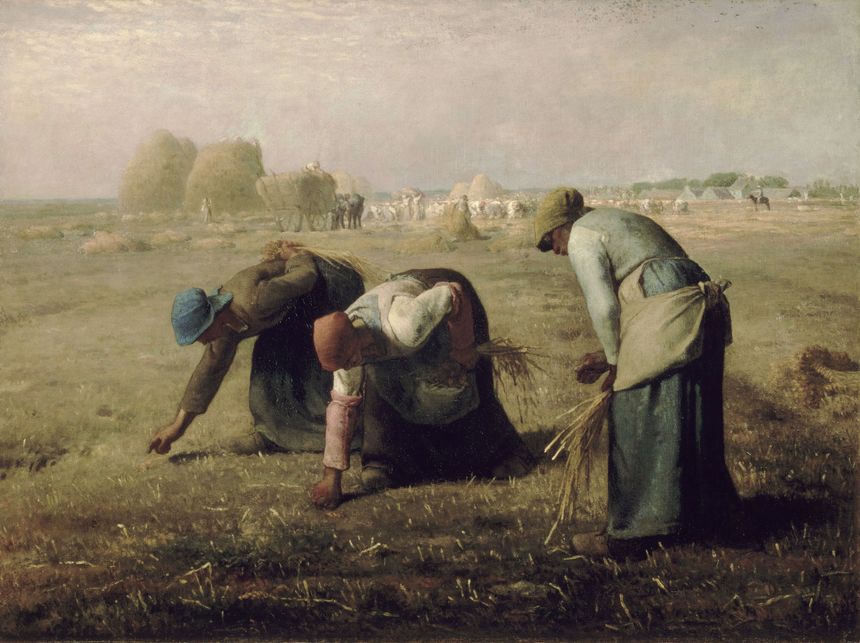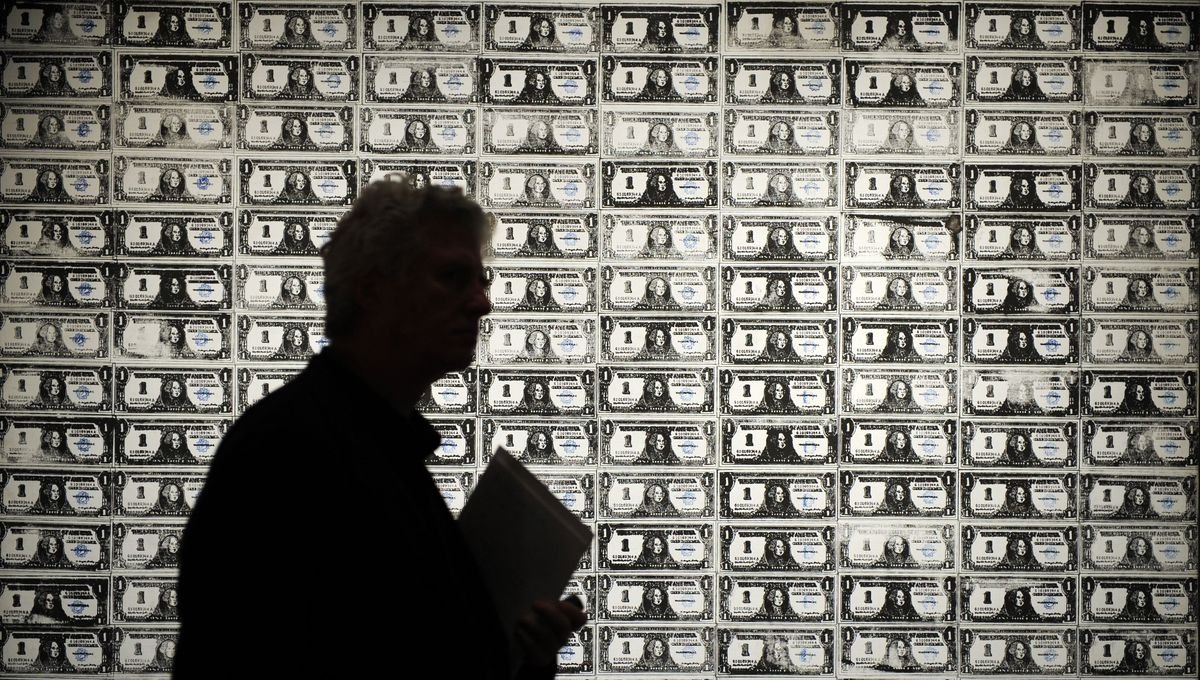The art market hits records:
in 2021, art auction sales topped $17 billion. But the artists did not wait for the capitalization of their creations to seize the subject of money.
The exhibition “Money in art”, visible at the Monnaie de Paris until September 24, 2023deciphers the relationship between art history and money since Antiquity, through 150 works. The curator of the exhibition, Jean-Michel Bouhours, curator and art historianexplains how money has always inspired artists, but also influenced creative practices over time.
When did money become a topic in Art History?

From Antiquity, there are works of art and pottery with representations of money or even golden rain. On a cup dating from the 5th century BC, one can notice, in an amorous scene, an exchange of money. Money is something important: we use it every day, we have it on us, we work to get it. Socially, it is something at the center of everything from the beginning of human relationships, an element of life required on a daily basis.
In what ways do artists represent money?
Up to and including the 19th century, money was represented in the form of coins, in the context of commercial exchanges or when trades related to it were painted. Very often, we find the figure of the money changer, the one who changes the currencies and who lives from it. This trade will be condemned very early on by the Bible, so we will never find it in the Catholic sphere, but rather among Protestant artists, in Dutch painting of the 16th and 17th centuries representing commercial scenes or exchanges of money. Much more recently, from the beginning of the 20th century, the monetary material is itself used to create works of art. This is the case in certain Dadaist or surrealist collages: we see banknotes, rubbings of coins, checks, bank cards. At Franck Scurti, the chip of a bank card is even reproduced in the form of stained glass.
More generally, how are wealth and the gaps between rich and poor represented?
Over the centuries, the great social inequalities are reproduced. The shock of representation is quite strong, especially for example in
Jean-François Millet, with his gleaners, but also at Jules Breton. They are painters of the 19th century who point to the question of a social class in the process of disappearing, on the point of joining the proletariat of the cities, with the development of the industrial revolution. When these populations are still in the countryside, the gleaners recover the few grains of wheat left by the farmers, so as not to starve.

Are representations of money and wealth necessarily critiques?
There is obviously a critical dimension which is far from negligible, and even very important. Marcel Duchamp, for example, was very opposed to the question of money. According to him, the artist was lost because of the art market: his works were dispersed, just like his name, in different corners of the globe. But there is also a part of anti-criticism, which is on the contrary a kind of abandonment, on the part of certain artists, of any complex vis-à-vis money. Andy Warhol is the emblematic figure of this movement. For him, making art is making money. This is something that was already in germ in Salvador Dali, nicknamed “Avida Dollars”.
In addition to visual representations, money and the advent of financial capitalism also influence the history of Art as a whole. How does this translate?

At the end of the 19th century, a new economic theory appeared which challenged the value of work, to establish it on scarcity and the desire of the consumer. It’s a completely new concept, but one that resonates with what is happening in the field of art history: the value of works is then set by criticism, and by their popularity. It is about the birth of the art market as we know it today, no longer based on work, but on something much more irrational: desire and the means of communication. At the time, Paul Durand-Ruel, an art dealer, understood what was happening and relied on bank credit to buy stocks of works from Impressionist artists who had no not yet a high rating, so that they can then be resold. He also appeals to critics to promote his artists to the press and swell their recognition. In fact, all the modern methods that we know today are set up around Impressionism.
What influence does this change have on creation?
Globalization has changed artistic practices. Great artists have become stars, whether on the New York, Paris, Hong Kong or Tokyo scene. This has caused changes in terms of the production of works: since the demand is stronger, the supply must follow. The painter is no longer alone in his studio, we have entered industrial structures.
Can digital technologies be seen as a new stage in the commodification of art?

NFTs do not represent an artistic evolution, but above all a revolution in terms of the commercialization of art. They mainly concern digital works which, a priori, no longer have the aura of a unique object, since they are reproducible. Cryptocurrency is causing the creation of a new art economy, and the notions of works and artists are becoming more blurred.

